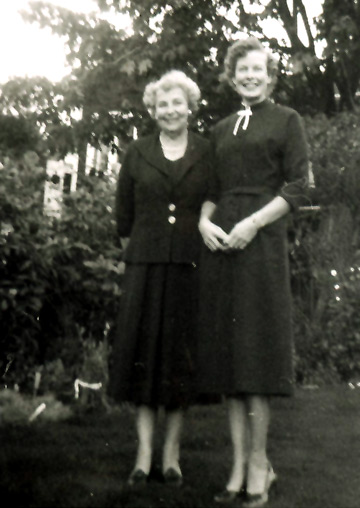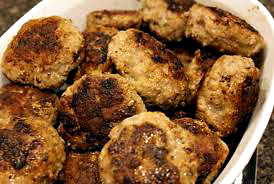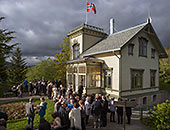 |
 |
|
 |
 |
||
|
Frikadeller
– Danish Meatballs
by Edward Stave Boitano
A Bite of History The meatball is an iconic food item known throughout the world. The ancient Roman cookbook Apicius included many meatball-type recipes, but today they are known in Italy as polpette. In Greece, fried meatballs are called keftédes, usually served over rice; while in Indonesia, meatballs are referred to as bakso, used in soup. The other Scandinavian versions in Norway (gehaktbal) and Sweden (köttbullar) are most often made with beef. My grandmother's meatballs, known in Denmark as Frikadeller, are made with pork, generally served with mashed potatoes and gravy (which my grandmother referred to as ‘the goodness.’) I was in comfort food heaven long before the term existed. On a recent trip to Copenhagen, I couldn’t wait to sample this sublime but simple dish on its home ground. And sample I did; having them with mashed potatoes, sliced on open-faced bread (smørrebrød), and even carrying a bag around as a snack. Now I know why the Danes are reportedly the happiest people on the globe. Frikadeller are typically fried, and made out of ground pork, onions, eggs, salt and pepper. They are then formed into balls and flattened somewhat, so they are pan ready.
Ingredients:
Frikadeller can also be served with boiled skinned potatoes with brown gravy, or with cold potato salad. God appetit!
|
Hi Audrey, Love your lamb shanks. --- Paul, Scottsdale AZ
Haven't been called Tad for . . .gee, maybe I've NEVER been called Tad . . . guess I'm the only one with chutzpah enough to mention Bourdain. BRILLIANT? --- Ken, Shutesbury, MA
I think we must have had an entirely different experience in the UK. (Fresh Food and Real Ale – week 1). We were up in Edinburgh and they served something called ‘Neeps & Tatties.’ The items were boiled so long that I couldn’t even recognize what I was eating. Come to think of it… I couldn’t taste them either. Later I found that Neeps’ are Turnips and ‘Tatties’ are potatoes. --- Lindy, Phoenix, AZ
My mouth was watering as I read some of your descriptions of the fantastic fare of ... England? I had always felt smug about the lowly reputation of British cuisine as this gave us at least one country with a worse culinary reputation than America's. I guess I'll have to change my views. Your article made me actually want to take a CULINARY tour of Britain. Yummy yummy yummy. --- Sandy Miner, Portland, OR Thanks for your note. Thanks to Traveling Boy I get to interview a world famous chef this week who is widely recognized as spearheading the Yummy movement in Ireland. Guess I'll have to take yet another culinary tour a little further north and check it out... (I love my job!) --- Audrey
Very interesting, mouth-watering piece by Audrey! (A McDreamy McMeel). Your web site is fascinating! --- Susie, Victoria, BC
Combining travel, food, and intelligent advice -- BRILLIANT! Your site fills a long-felt need for hungry roamers. Keep it up! It's Anthony Bourdain with reservations and CLASS. --- Tad, Boston, MA
|
|
| |||
This site is designed and maintained by WYNK Marketing. Send all technical issues to: support@wynkmarketing.com

|




















